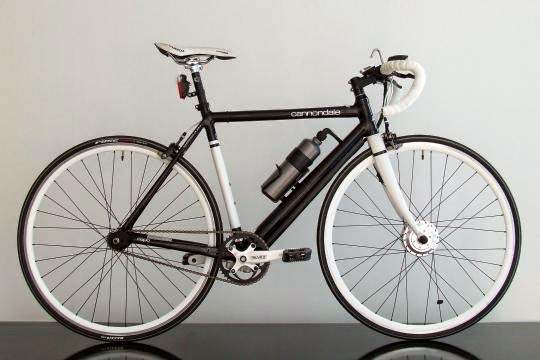Problem: a water bottle has limited volume resulting in a limited number of 18650 cells that can be fit into the bottle. So, how do we know what is the most optimal series and parallel connection between batteries in a pack?
Approach: choose as high as possible “p” number for the highest drain-efficiency of batteries.
Solution. Lets estimate all possible configurations for battery cell connection in series and in parallel. The following table shows three most common voltage used in electric bikes (24V, 36V and 48V) as well as batteries connect in parallel (7p - 7 cells connected in parallel, 6p - 6 cells in parallel etc.)
Lets drain the battery pack with a specific current so that the current per single battery is 2A. What power to the motor would we get?
Approach: choose as high as possible “p” number for the highest drain-efficiency of batteries.
Solution. Lets estimate all possible configurations for battery cell connection in series and in parallel. The following table shows three most common voltage used in electric bikes (24V, 36V and 48V) as well as batteries connect in parallel (7p - 7 cells connected in parallel, 6p - 6 cells in parallel etc.)
Lets drain the battery pack with a specific current so that the current per single battery is 2A. What power to the motor would we get?
| 2A |
7p (14A)
|
6p (12A)
|
5p (10A)
|
4p (8A)
|
3p (6A)
|
7s (24V)
|
49 bats
336 W
|
42 bats
288 W
|
35 bats
240 W
|
28 bats
192 W
|
21 bats
288 W
|
10s (36V)
|
70 bats
504 W
|
60 bats
432 W
|
50 bats
360 W
|
40 bats
288 W
|
30 bats
216 W
|
13s (48V)
|
91 bats
672 W
|
78 bats
576 W
|
65 bats
480 W
|
52 bats
384 W
|
39 bats
144 W
|
Now lets drain the battery pack with a specific current so that the current per single battery is 3A. What power to the motor would we get?
| 3A |
7p (21A)
|
6p (18A)
|
5p (15A)
|
4p (12A)
|
3p (9A)
|
7s (24V)
|
49 bats
504 W
|
42 bats
432 W
|
35 bats
360 W
|
28 bats
288 W
|
21 bats
216 W
|
10s (36V)
|
70 bats
756 W
|
60 bats
648 W
|
50 bats
540 W
|
40 bats
432 W
|
30 bats
324 W
|
13s (48V)
|
91 bats
1008 W
|
78 bats
864 W
|
65 bats
720 W
|
52 bats
576 W
|
39 bats
432 W
|
Another way to look at it is this:
- 7s4p (28 batteries). Lets drain 5A per cell, so 5A x 4batts = 20A. This gives 24V x 20A = 480 W.
- 10s3p (30 batteries). Lets drain 5A per cell, so 5A x 3batts = 15A. This gives 36V x 15A = 540 W.
Conclusion. If I can find the nice bottle which would accommodate 35 batteries, then I can choose 7s5p configuration, 15A (5batteries * 3A per cell = 15A) gives nice 25A*24V = 600W power.
The voltage of Li-Ion batteries connected in series:
3s (11.1V), 6s (22.2V), 7s (25.9V), 8s (29.6V), 9s (33.3V), 10s (37.0V),
11s (40.7V), 12s (44.4V), 13s (48.1V), 14s (51.8V), 15s (55.5V), 16s (59.2V).
Fitting batteries into a water bottle
For searching a bottle online, use the estimated for vertical and horizontal dimensions.
For searching a bottle online, use the estimated for vertical and horizontal dimensions.
Vertical dimensions. 18650 batteries with PCB BMS protection (actual battery code is 19670) are 19mm in diameter and 67mm in length. Add the length for layer insulation and cable feedthroughs (+8 mm), so I estimate battery length to be 75 mm. Then a battery stack of 3 levels needs at least 225 mm bottle height. Add 20 mm for MBS PCB board, so in total the bottle should be at least 245mm or 24.5 cm
Horizontal dimensions.
16 batteries needs at least 90 mm internal bottle diameter.
15 batteries - 87 mm internal bottle diameter.
14 batteries - 84 mm internal bottle diameter.
13 batteries - 81 mm internal bottle diameter.
12 batteries - 79 mm internal bottle diameter.
11 batteries - 76 mm internal bottle diameter.
10 batteries - 75 mm internal bottle diameter.
More on fitting batteries into a bottle with a given diameter:

No comments:
Post a Comment